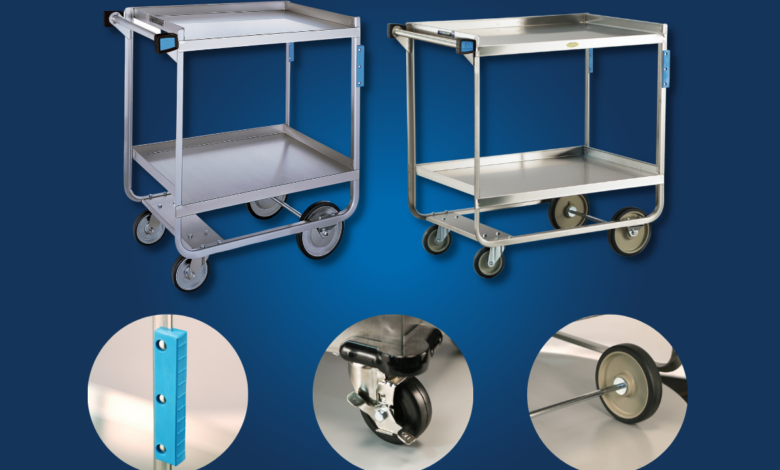Strategies for Streamlining Operations with Versatile Utility Carts

In modern work environments, where efficiency and speed are valued, carefully customizing utility carts has proven instrumental. The essence of this customization lies in the ability to modify aspects such as the size of the cart, types of wheels for certain floor conditions, or the inclusion of compartments specific to the tools, materials, or goods being transported. As a result of these modifications, utility carts become more than mere transportation aids; they evolve into intricately designed vessels that optimize the time and efforts of the workforce across various industries.
Advantages of Using Utility Carts in Various Industries
Implementing a custom utility cart is more than just a convenience; it is a cost-effective approach that can lower operational expenses. Additionally, a well-designed cart system can provide enhanced organization and swift maneuverability, resulting in a smoother, more streamlined workflow and efficient storing of supplies. By taking on the load employees would otherwise carry, these carts can significantly reduce the time spent on manual transportation. This shift allows staff to redirect their efforts towards tasks that demand critical thinking or a human touch.
Operational Benefits: Cost Savings and Efficiency
Implementing utility carts is not solely a matter of convenience; it is a cost-effective strategy that drives down operational expenses. By shouldering the load that employees would otherwise carry, these carts can significantly reduce the time spent on manual transportation, allowing staff to reallocate their efforts to tasks that require critical thinking or a human touch. In addition, the organization and swift maneuverability afforded by a well-designed cart system result in a smoother, more streamlined workflow.
Choosing the Right Utility Cart for Your Needs
Businesses should choose the right utility cart that suits their needs based on several factors, such as the cart’s size, material strength, load capacity, and casters suitable for their facility’s floor surfaces. On the other hand, in environments where space is limited, it is best to opt for smaller, more agile carts with locking wheels, as they can easily navigate tight spaces without causing disruption and facilitate the efficient storage of supplies. Heavy-duty carts with significant, industrial-strength wheels are considered essential in warehouse settings where bulky equipment needs to be transported. It is crucial to store supplies efficiently to make the most out of your cart.
Design Considerations for Maximum Functionality
When investing in utility carts, the design must center around the needs of the users. Factors such as the positioning of handles for optimal ergonomic usage, the choice of swivel or fixed wheels for maneuverability, and even the option of adjustable height shelves all play prominent roles. Beyond the essential structural elements of the cart, clever design extends to elements such as silence, ensuring smooth movement through quiet areas, non-slip surfaces for secure transport, and custom compartments made for the specific tools or materials in use.
Integrating Utility Carts with Technology
Utility carts, once considered solely as physical labor aids, are now increasingly finding a place in tech integration. With innovations such as onboard power supplies and tablet mounts, these carts have become mobile technology hubs, indispensable in settings requiring electronics away from fixed locations. In hospitals, for instance, carts come equipped with workstations for electronic health records, enabling real-time updating of patient data as clinicians move from bed to bed.
Utility Carts as a Sustainable Option
Utility carts also represent a move towards sustainable practices within the operational environment. Their durable construction and reusability significantly reduce single-use packaging and disposable transport mediums. This sustainability feature reflects a commitment to environmental stewardship and can profoundly affect an organization’s carbon footprint.
User Experience and Employee Satisfaction
The benefits of utility carts extend beyond organizational efficiency and dive into user experience. A well-designed utility cart considers user comfort and safety factors. Features like height customization, easy-grip handles, and braking systems cater to the users’ physical well-being, fostering a more satisfied and engaged workforce.
Continual Advancements in Utility Cart Design
Utility cart design is subject to ongoing innovation as manufacturers strive to address the diverse and changing needs of the marketplace. The current trend towards modularity underscores this, as it allows for specific components of a utility cart to be replaced or upgraded without the need to purchase a new one altogether. This design approach provides a flexible and cost-effective solution that adapts to evolving business demands, ensuring the relevance of the utility cart as a critical component of operational efficiency.



